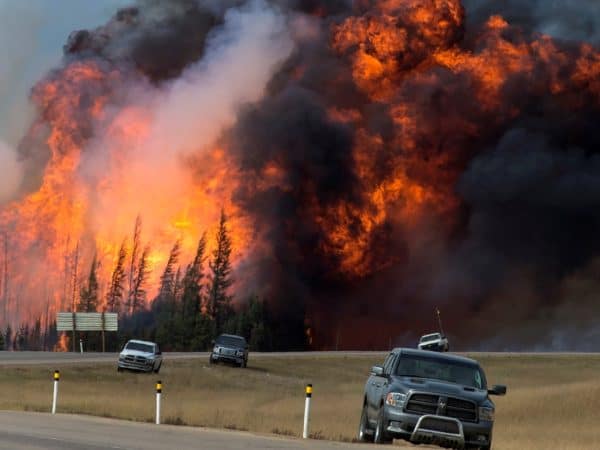U of T researchers to test Fort McMurray homes for deadly toxins

 University of Toronto researchers believe the massive Fort McMurray forest fire that caused 2,400 homes to be destroyed and 90,000 people to evacuate last year could continue to cause havoc even after it has long since been extinguished.
University of Toronto researchers believe the massive Fort McMurray forest fire that caused 2,400 homes to be destroyed and 90,000 people to evacuate last year could continue to cause havoc even after it has long since been extinguished.
Ash that has made its way into homes in northern Alberta could cause health problems for residents for years to come if not properly dealt with, say researchers. Ashes can contain heavy metals such as lead or carcinogenic materials.
“Smoke and ash can contain a large number of different compounds, including organic compounds, heavy metals, black carbon and more. Some of these are suspected to be carcinogens or are linked to other negative health outcomes,” said Arthur Chan, an Assistant Professor at U of T and head of this project to U of T News.
Researcher Lucas Kohl, undergrad student Cynthia Jing, and Chan will be canvassing homes in northern Alberta and taking samples with a vacuum and wet wipes. From there they will analyzing the different components of the ash. Labelled the Fire Ash Characterization and Evaluation of Toxicity (FACET) project, the call was put out to residents of Fort McMurray and Fort McKay First Nation to let researchers into their homes to vacuum up dust from carpets, attics and hard-to-reach surfaces to be taken back to the lab for analysis. The team is hoping to take three sets of samples from each house, during the upcoming summer, fall and winter, so as to compare hazard levels over time.
“Of course, our hope is that we won’t find anything,” continues Chan. “But if we do, we can inform people of their risk and suggest adjustments to their cleaning habits. We want to understand the impacts before people start to suffer from them and provide guidelines to minimize exposure.”
Beginning July 10, the trio will be going around to some 220 homes which residents have offered to let the researches take samples from. Some of the homes were near the fire, but others are more out of the way and could have only come in contact with ash because of the wind.
So far, residents, who will get a report on the amount of fire-related toxins in their homes, seem quite interested in participating.
“We have reached out to Facebook groups used by people in Fort McMurray, as well as local media,” says U of T undergraduate student Cynthia Jing, a member of the FACET team, which also includes researchers from the University of Alberta and Environment Canada. “Within two days, we already had more than 60 interested people contacting us about the study.”
The researchers say they intend to be thorough.
“We want to make sure we sample a variety of locations within the house. For example, we want to have one space that people clean often, like a living room, and one space that is not frequented, like an attic, where it is most likely we will find old dust that contains a lot of fire ashes,” Kohl told U of T News.
The trio will be making a total of three visits to each home, once each season, to help eliminate abnormalities as well as to analyze any changes that may occur as time goes on.
“This is the ash that is closest to people’s bodies and because we spend most of our time indoors, it would have the biggest impact on people’s health. Indoor pollution is not well understood so in a way this is a new perspective on forest fires,” Kohl says.
Today, Fort McMurray is looking to bounce back. According to an Edmonton Journal report, 424 new foundations have been poured and inspected since the wildfire, but the longer-term health effects of the fire remain unknown.
The 2016 wildfire, nicknamed “The Beast”, that tore through the northern Alberta town of Fort McMurray left plenty of devastation in its wake. 2,519 homes were destroyed and a further 1,762 residences have since been destroyed, having been declared unsafe for reoccupation due to contamination.
The Fort McMurray fire has been called the most expensive natural disaster in Canada’s history. The Insurance Bureau of Canada has put the cost in insurance claims at $3.6 billion, far out-stripping the 1998 ice storm in Quebec ($1.9 billion) and the 2013 flooding in southern Alberta ($1.8 billion).
But the rebuilding effort has also led to economic growth, with the provincial finance ministry expecting to see a 0.5 per cent uptick in Alberta’s GDP as a direct result. The Conference Board of Canada predicted that 9,000 new jobs would be created this year, welcome news for northern Alberta, which had seen unemployment rates increase in recent years due to the drop in oil prices.

Dylan Waddell
Writer
